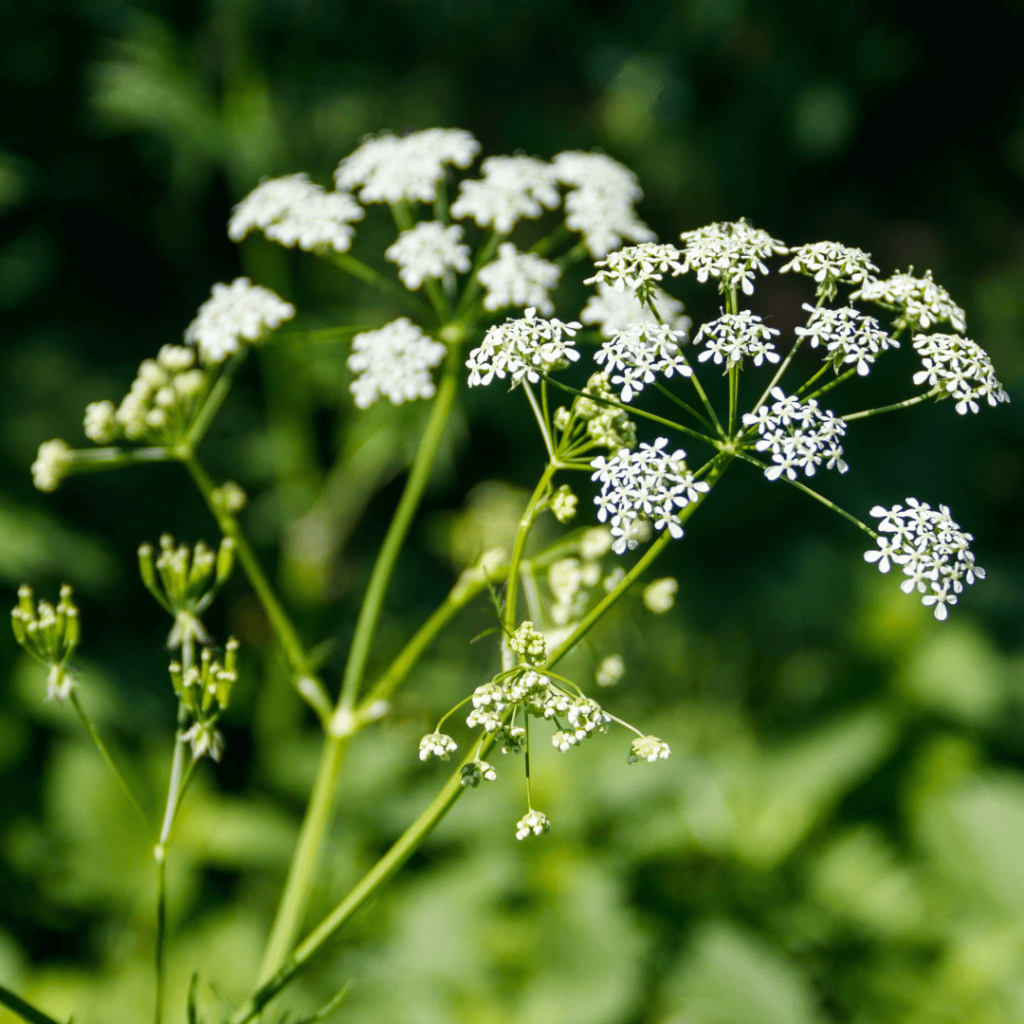Poison Hemlock
Conium maculatum
Poison hemlock is a poisonous plant in the carrot family. Purple or red shoots are seen in the stalks and the leaves are spread in a fern-like way. Clusters of small white flowers top the stalks. Hemlock favors sunny, open areas and may be seen on roadsides, in open fields or vacant and undeveloped land. It is considered a noxious weed because of its danger to humans, livestock, and wildlife. All three groups may suffer severe medical issues or even death after ingesting any part of the plant.
Hemlock became notorious after the death of the Greek philosopher, Socrates. He ingested a hemlock mixture after being found guilty of corrupting the youth of Athens through his constant questioning of people’s beliefs and religious ideas. Hemlock poisoning results in nervous and respiratory distress. The plant’s secretions may cause blisters and rashes if they come in contact with an open wound or scratch on the skin. People may become weak and unable to breathe well if they breathe in the spores of the plant. There is no antidote for hemlock poisoning, so experts advise avoiding the plant altogether. Be wary in warmer months when mowing, hiking, or walking through fields that may contain hemlock and seek medical attention if it becomes hard to breathe, the pupils dilate, or muscles begin to contact involuntarily.
Anniston Museum’s poison hemlock specimen is on loan from the Jacksonville State University Herbarium. Learn more about poison hemlock and other poisons in Anniston Museum of Natural History’s temporary exhibit, Bites, Pinches, Poisons, and Stings.

